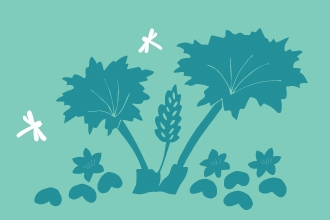Inkpen Crocus Field in bloom. Picture: Pete Hughes
Top 10 wildlife sightings for Feburary
Hazel catkins dangling down
Crocuses
With their delicate pinky-purple petals, vibrant yellow stamens and deep-orange stigmas, crocuses are one of our prettiest spring flowers. The stigmas of some species are also the source of spice saffron, which is often more expensive than gold.
In this country, the best display of wild crocuses happens to be at our Inkpen Crocus Field reserve in West Berkshire: each February the crocus field hosts tens of thousands of blooms which can last through to April.
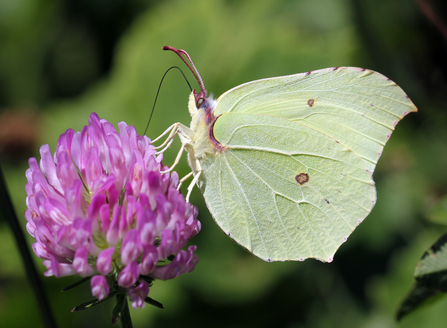
Brimstone ©Jim Higham
Overwintering butterflies
Small tortoiseshells, peacocks and brimstones are some of the iconic British butterfly species that overwinter as adults, often hiding in the corners of windows in our houses and sheds.
In February on warmer days these hardy survivors start to make their first forays out to find nectar. Brimstones in particular have evolved to flourish during this period, with long tongues (called a proboscis) allowing them to reach nectar from the deep centres of primroses which flower in winter. Whitecross Green Wood near Bicester is a good reserve to look for early butterflies.
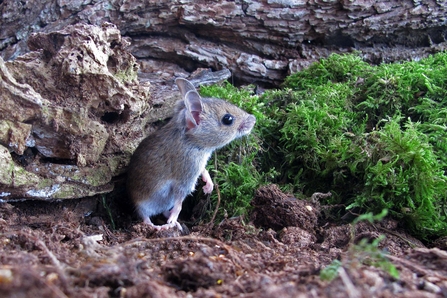
Wood mouse by Margaret Holland
Wood mice
The tiny, brown wood mouse is one of our commonest rodents and is very likely to be found in the garden - but it is nocturnal. Though similar to the house mouse, it has larger ears and eyes relative to its size.
Wood mice gather food stores of berries and seeds in the autumn, which they keep in underground burrows or sometimes in old birds' nests over winter. February is the time of year when they start to breed again, so you are more likely to spot them out and about. Females have up to six litters a year, each with between four and eight young.
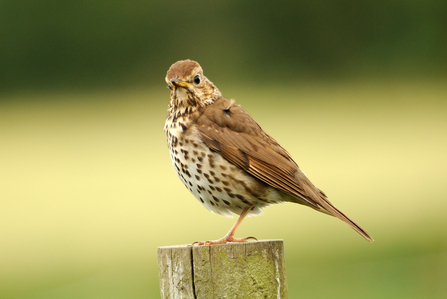
Song thrush ©Amy Lewis
Song thrush
Despite an understated streaky-brown appearance, the song thrush lives up to its name with a beautiful, loud song characterised by repeating phrases. While song thrushes eat all kinds of food, earthworms make up a large part of their diet, but at this time of year when the ground can become too hard to get at them, they turn to snails instead. To get at the meat inside, they take the shell and crack it open by banging it against a stone 'anvil', a behaviour unique to these birds. Look out for the piles of broken snail shells they leave behind.
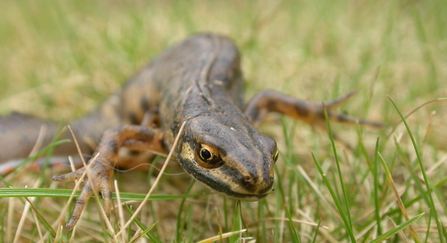
Smooth newt © Philip Precey
Newts
Newts spend the winter hibernating on dry land, hiding under logs and rocks until they can return to the water without fear of being frozen, just in time for breeding season to begin next month.
Each year we eagerly await their return to the ponds across our nature reserves. We are proud to have all three UK species of newt at our Greenham Common reserve near Newbury: the famous great crested, the delicate smooth newt and the lesser-known palmate.
If you spot hazel catkins when you're out, take a closer look for its flowers!
Hazel flowers and catkins
Hazel isn’t the only tree that produces catkins - others include willow and alder – but it is one of the earliest, with both its female flowers and male catkins seen all around at this time of year.
The catkins hang like little tails from bare branches, wafting pollen in the breeze. The flowers appear as tiny, bright-pink 'tentacles', easily passed over by a casual glance. Take a closer look and be amazed by this minute flower as it waits to catch pollen released by the catkins.
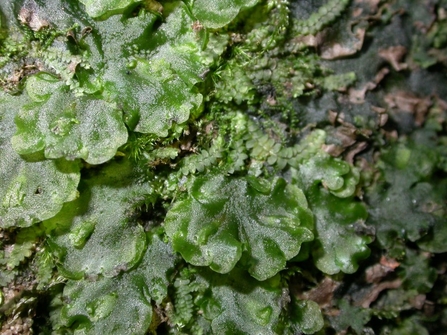
Liverworts. Picture: Philip Precey
Liverworts
With nearly 300 species in the UK, liverworts are simple, non-vascular plants found all around the world, producing spores instead of flowers. They are a part of the bryophyte group of plants which also incudes mosses. 'Wort' is an old English word for a plant, and ‘liver’ refers to the shape of the leaf-like lobes.
These alien-looking organisms also provide a hugely important link to our ancient past: the earliest fossils provide us with the first evidence of plants colonising land. Look for them in damp woodlands like our Rushbeds Wood reserve, near Bicester.
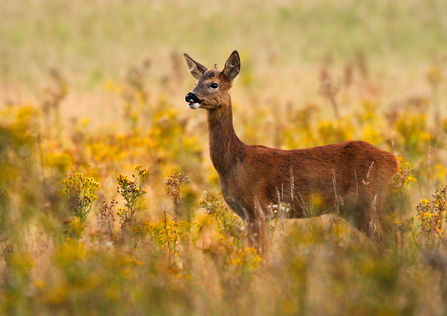
Roe deer ©Jon Hawkins - Surrey Hills Photography
Roe deer
Our most common native deer, the roe deer tends to be solitary in summer, but forms small, loose groups in these winter months.
While hunted to near extinction by the 19th century, reintroductions from Europe have given roe deer an impressive comeback, with numbers today estimated at a whopping 500,000. As the deer’s natural predators, such as lynx and wolves, no longer roam our countryside, this number is dramatically increasing, with problematic knock-on effects for woodland habitats – deer love to eat the new growth. On the bright side, you’re more likely than ever before to spot them on a walk!
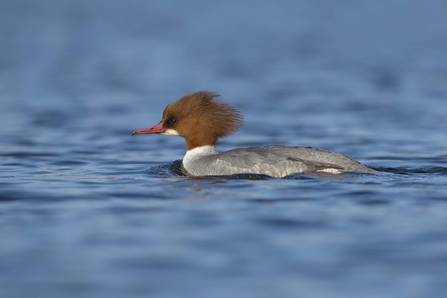
©Richard Steel/2020VISION
Goosanders
The goosander is a distinctive duck and a member of a group called the 'sawbills' because of its long, narrow bill with saw-like 'teeth' which is good for gripping fish. A long, streamlined bird, it is also perfectly shaped for swimming after them.
While they primarily breed in Wales and the north of the UK, around 15,000 goosanders join us for the winter from north-eastern Europe – so keep a look out for these sleek fish hunters on lakes and reservoirs such as Hosehill Lake and Weston Turville Reservoir before they return next month.
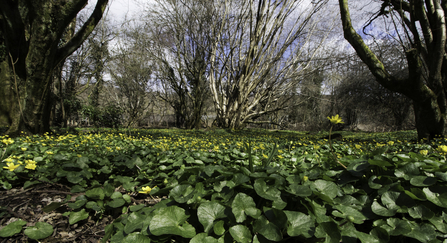
Lesser celandine by Chris Lawrence
Lesser celandine
Look for a sunny splash of colour from lesser celandines. While their shiny, heart-shaped leaves have been around since December, the yellow star-shaped flowers will begin to emerge later this month. 21 February is known as Celandine Day due to famed naturalist Gilbert White noting that the flowers usually appear on this date.
You might spot them along stream banks and ditches, or in damp woodland such as Finemere Wood near Aylesbury or Padworth Common south of Reading. They're an important source of food for early insects emerging after winter.



